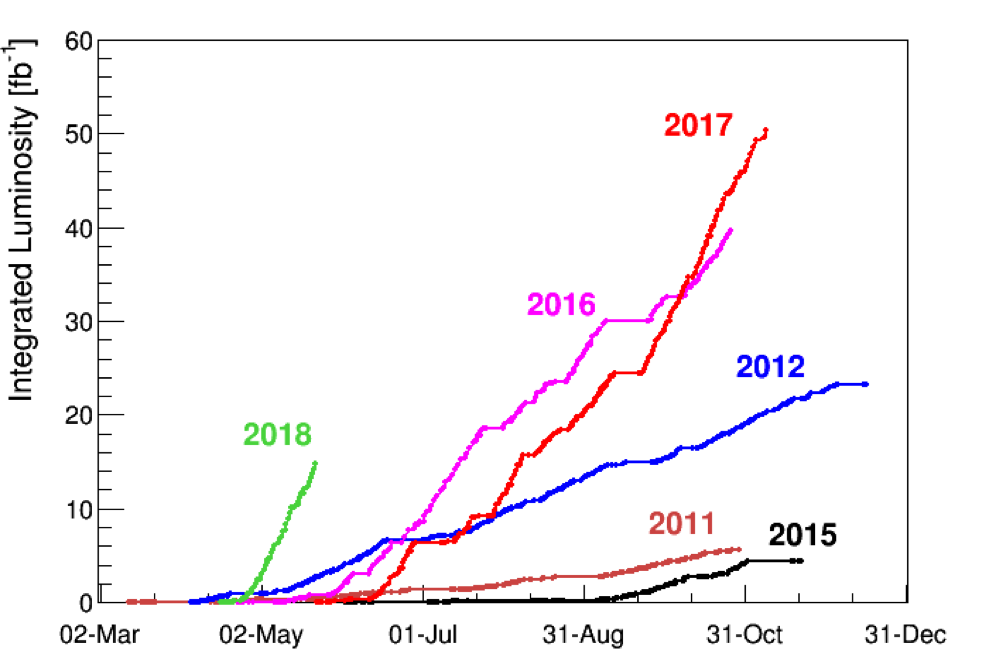In a couple of weeks the first block of machine development days will start, during which the machine is available to the various experts and specialists to perform tests, as well as machine and beam studies. These studies are generally aimed at improving the performance of the LHC and preparing for the HL-LHC, but also at better understanding observed phenomena, such as beam instabilities, etc. This will be followed by a four-day technical stop to perform the necessary maintenance not just on the machine, but also on the experiments.
A one to two day technical stop recovery normally brings the machine back to production performance, but the experiments, through the LHC Programme Committee, have decided to perform a series of special runs that are also part of the LHC physics programme. During the first of these, so-called van der Meer scans will be carried out in the experiments. These aim to calibrate precisely the luminosity measurements provided by the experiments. To do this, the injectors will prepare a high quality beam with a reduced number of bunches that will be injected, accelerated and collided in the LHC. The beam position in the experiments will then be scanned, separating the beams more or less. Doing so in the horizontal and vertical planes, we can establish an absolute luminosity measurement to which the values of the luminosity measurement system can then be compared.
The second of the special runs consists of running with un-squeezed beams with a b* of 90 m, meaning that the angle of the particles will be very low. In other words, the particles are travelling in a much more parallel fashion, allowing special physics to be carried out by CMS and TOTEM, as well as by ATLAS and ALFA.
Once these special runs are completed, normal operation will resume, again in luminosity production mode. These periods of machine development, technical stops and special runs will create plateaus in the curves of integrated luminosity, but these are already taken into account in the luminosity forecast that aims at 60 fb-1 in 2018.


